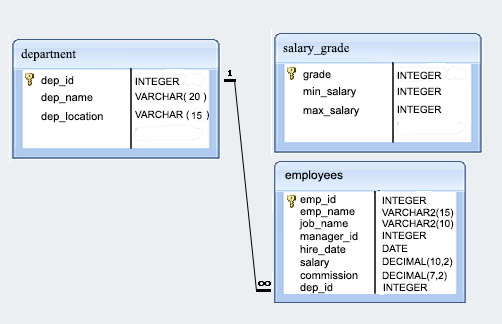SQL Exercise: List the names of those employees starting with A
[An editor is available at the bottom of the page to write and execute the scripts.]
105. From the following table, write a SQL query to identify those employees whose names begin with 'A' and are six characters long. Return employee name.
Sample table: employees
Sample Solution:
SELECT emp_name
FROM employees
WHERE emp_name LIKE 'A%'
AND length(emp_name)=6;
Sample Output:
emp_name ---------- ADELYN ADNRES (2 rows)
Explanation:
The said query in SQL that selects the names of employees whose names start with 'A' and have a length of exactly 6 characters from the employees table.
The WHERE clause includes employees whose names starts with 'A' and the length() function to check if the length of the name is exactly 6 characters.
Practice Online
Sample Database: employee

Have another way to solve this solution? Contribute your code (and comments) through Disqus.
Previous SQL Exercise: List the number of employees and average salary.
Next SQL Exercise: Six-character employee names with R in 3rd position.
What is the difficulty level of this exercise?
Test your Programming skills with w3resource's quiz.
